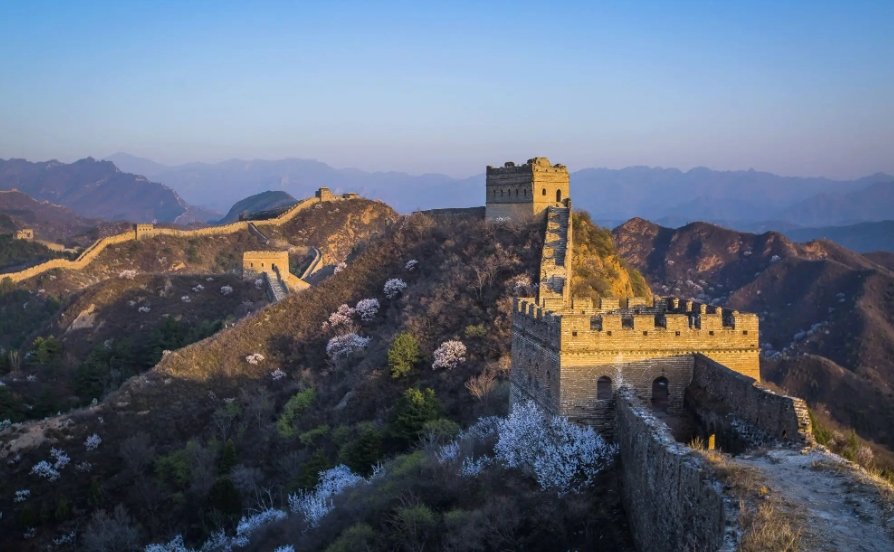
The Simatai Great Wall: Where Gentle Beauty Meets Rugged Grandeur
The Simatai Great Wall, a section of the majestic Great Wall of China located in Miyun County, approximately 120 kilometers northeast of Beijing, is renowned for its unique blend of natural beauty and architectural prowess. Unlike other restored sections, Simatai retains its original appearance, showcasing the passage of time and the enduring spirit of its builders. This particular section is divided into distinct eastern and western parts by a serene body of water known as Mandarin Duck Lake, each side offering a vastly different experience.
The West: A Stroll Through History
The western portion of the Simatai Great Wall presents itself as a gentle giant, inviting visitors on a leisurely journey through history. Here, the wall snakes its way across rolling hills, its timeworn bricks and stones imbued with stories of centuries past. Twenty remarkably preserved watchtowers stand guard along the western section, each one a testament to the architectural ingenuity of its time. These towers, some square, some round, served as strategic lookout points for ancient soldiers, offering panoramic views of the surrounding landscape. The gentle slopes and well-maintained pathways of the west make it an ideal choice for families and those looking for a more accessible hike.
The East: A Test of Mettle
In stark contrast to the west's gentler nature, the eastern part of the Simatai Great Wall presents a more challenging and exhilarating experience. Here, the wall rises dramatically, clinging precariously to steep cliffs and plunging into deep ravines. This section is not for the faint of heart, demanding a degree of physical fitness and a taste for adventure. The reward for conquering the east's demanding terrain is a sense of accomplishment and breathtaking views that are simply unparalleled. Among its most iconic features are the "Heavenly Ladder" – a near-vertical staircase carved into the mountainside – and the "Sky Bridge" – a narrow, exposed section of wall that tests even the bravest of souls.
Mandarin Duck Lake: A Moment of Tranquility
Nestled between these two contrasting sections lies Mandarin Duck Lake, a tranquil oasis that provides a welcome respite from the rugged grandeur of the wall. Legend has it that the lake earned its name from the many pairs of mandarin ducks that graced its waters, a symbol of love and fidelity in Chinese culture. Today, the lake serves as a picturesque reminder of the harmony between humanity's creations and the natural world.
The Simatai Great Wall: An Unforgettable Experience
Whether you seek a leisurely stroll through history, a challenging climb amidst breathtaking scenery, or simply a moment of peaceful reflection, the Simatai Great Wall has something to offer everyone. This remarkable site stands as a testament to human ingenuity and perseverance, offering a glimpse into a fascinating past and an unforgettable adventure in the present.
Q&A
Q: What makes the Simatai section of the Great Wall unique?
A: Unlike many other restored sections, the Simatai Great Wall retains its original appearance, showcasing its age and the skill of its original builders. It also boasts a dramatic landscape, with the wall traversing steep cliffs and rugged mountains.
Q: How difficult is it to hike the Simatai Great Wall?
A: The difficulty level depends on the section you choose. The western part is gentler and more accessible, while the eastern part is steeper and more physically demanding.
Q: What is the significance of Mandarin Duck Lake?
A: Mandarin Duck Lake not only divides the Simatai Great Wall into two distinct sections but also provides a beautiful contrast to the rugged landscape. It represents the harmony between nature and human creation.